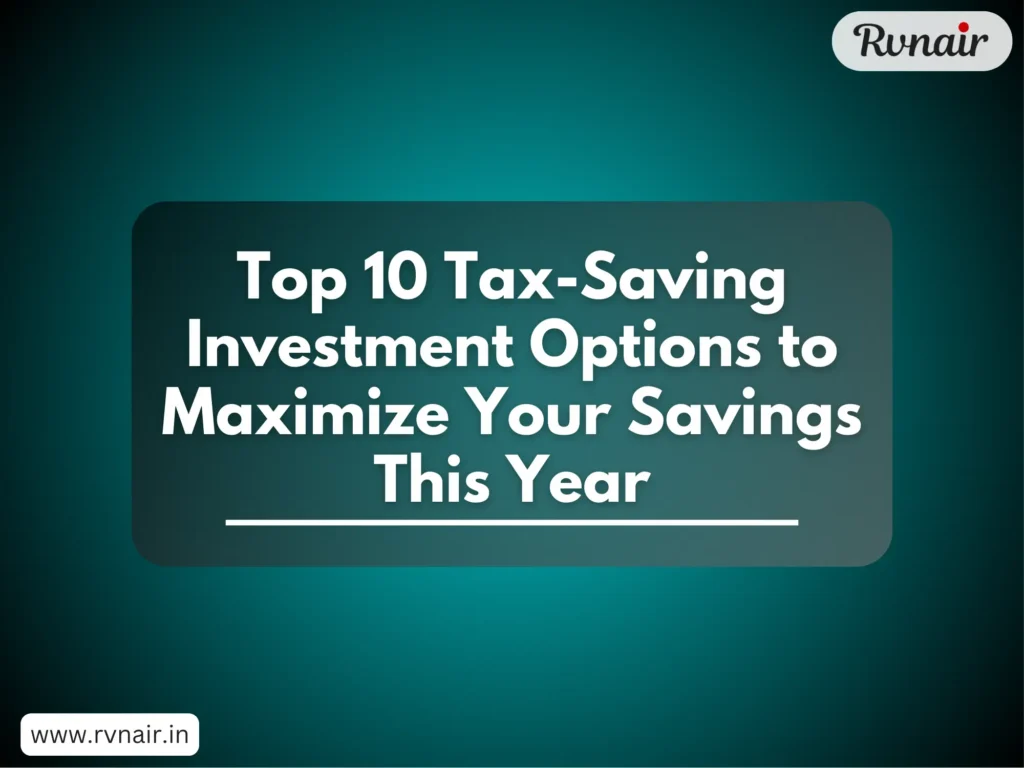
As the financial year progresses, taxpayers are looking for effective ways to minimize their tax liabilities while building wealth. Here’s a detailed overview of the top investment options under Section 80C of the Income Tax Act, focusing on returns, safety, flexibility, liquidity, costs, and taxability.
1. Equity-Linked Savings Scheme (ELSS)
- Returns: Market-linked, typically 12-15% over the long term.
- Lock-in Period: 3 years (shortest among 80C options).
- Taxability: Gains above ₹1 lakh taxed at 10%.
- Pros: High growth potential and a short lock-in period.
- Cons: Subject to market risks and returns are not guaranteed.
2. Public Provident Fund (PPF)
- Returns: Currently 7.1% per annum (revised quarterly).
- Lock-in Period: 15 years (partial withdrawal allowed after 7 years).
- Taxability: Tax-free interest and maturity.
- Pros: Sovereign guarantee and tax-free returns.
- Cons: Long lock-in period and relatively moderate returns.
3. National Pension System (NPS)
- Returns: Market-linked, based on asset allocation.
- Lock-in Period: Until retirement.
- Taxability: 60% of the corpus is tax-free; annuity income is taxable.
- Pros: Additional ₹50,000 deduction under Section 80CCD(1B).
- Cons: Limited liquidity and mandatory annuity purchase.
4. Unit Linked Insurance Plans (ULIPs)
- Returns: Market-linked, varying by fund performance.
- Lock-in Period: 5 years.
- Taxability: Maturity proceeds tax-free if annual premium ≤ ₹2.5 lakh.
- Pros: Combines insurance with investment; tax-free returns.
- Cons: High charges and complex structure.
5. Tax-Saving Fixed Deposits
- Returns: 5.5-7% per annum.
- Lock-in Period: 5 years.
- Taxability: Interest is fully taxable.
- Pros: Low risk and simple to understand.
- Cons: Taxable interest and moderate returns.
6. Sukanya Samriddhi Yojana (SSY)
- Returns: 7.6% per annum (revised quarterly).
- Lock-in Period: Till the girl child turns 21 or upon her marriage after 18.
- Taxability: Completely tax-free.
- Pros: High returns and supports girl child welfare.
- Cons: Restricted to the girl child and long lock-in period.
7. National Savings Certificate (NSC)
- Returns: 6.8% per annum.
- Lock-in Period: 5 years.
- Taxability: Interest is taxable but qualifies for 80C deduction.
- Pros: Guaranteed returns and low risk.
- Cons: Taxable interest and moderate returns.
8. Employee Provident Fund (EPF)
- Returns: 8.5% per annum.
- Lock-in Period: Till retirement (partial withdrawals for specific purposes).
- Taxability: Interest tax-free up to ₹2.5 lakh annual contribution.
- Pros: High returns and tax-free savings.
- Cons: Limited to salaried individuals; restricted liquidity.
9. Senior Citizens’ Savings Scheme (SCSS)
- Returns: 7.4% per annum.
- Lock-in Period: 5 years (extendable by 3 years).
- Taxability: Interest is taxable.
- Pros: Regular income with high returns.
- Cons: Only for individuals above 60 years; taxable interest.
10. Voluntary Provident Fund (VPF)
- Returns: Matches EPF rates (currently 8.5%).
- Lock-in Period: Till retirement.
- Taxability: Interest is tax-free up to ₹2.5 lakh contribution annually.
- Pros: High returns and tax-free interest.
- Cons: Limited to salaried employees and reduced liquidity.
Conclusion:
Choosing the right tax-saving investment depends on your financial goals, risk tolerance, and liquidity requirements. For higher returns, ELSS and NPS are ideal for risk-tolerant investors, while PPF and SSY offer safe, long-term options. Act now to make the most of these tax-saving opportunities and secure your financial future.
